St John’s Anglican Church
corner Centre & Tucker Roads, Bentleigh
Built 1961 Hill, Norman & Beard (o/n 513) for St Luke's Anglican Church, Brighton,
incorporating some pipework from earlier organ in the church.
Installed present location 1991 Geo Fincham & Sons Pty Ltd.
Renovated 2019 Australian Pipe Organs Pty Ltd.
2 manuals, 4 ranks extended, electro-magnetic action
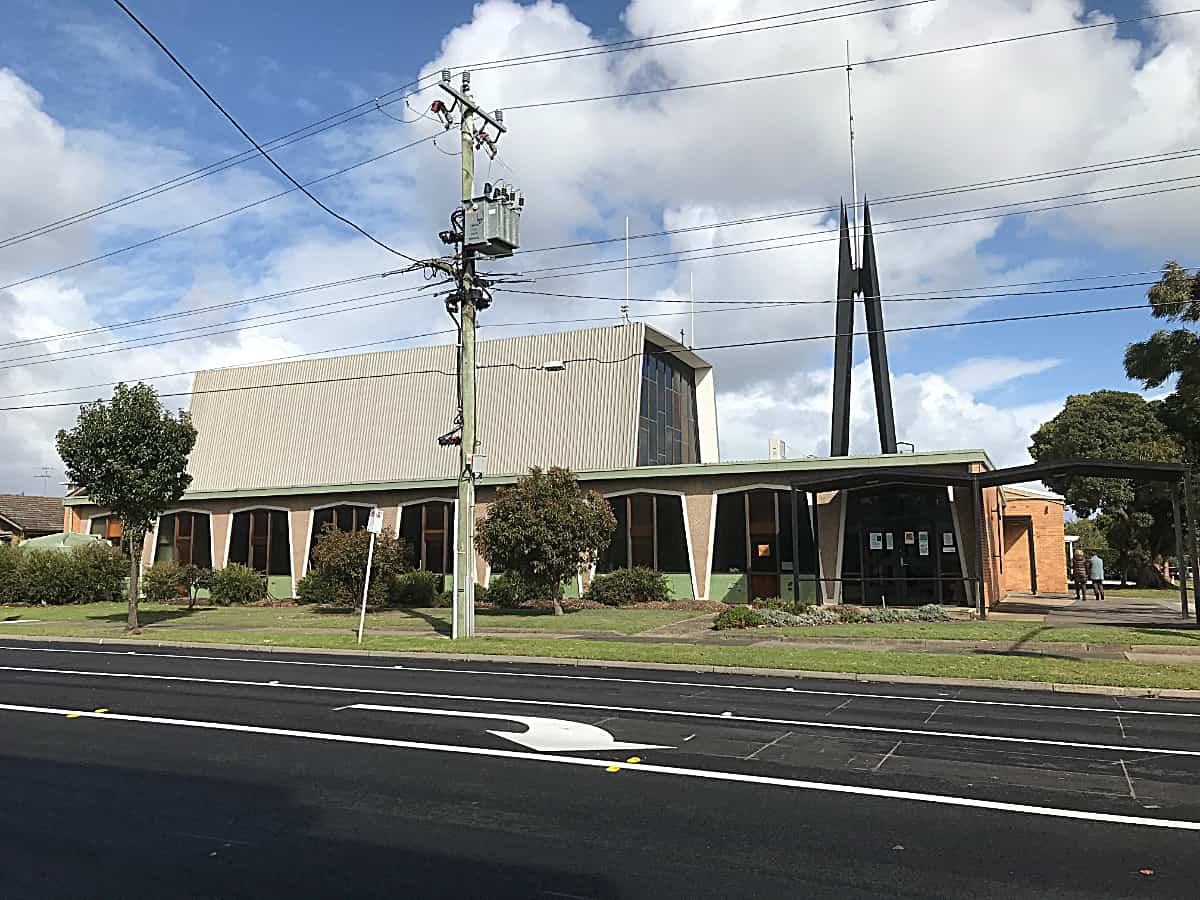
St John’s Anglican Church, Bentleigh – exterior
[photograph by John Maidment (April 2021)]
Historical and Technical Documentation by John Maidment
© OHTA, 2021 (last updated November 2021)
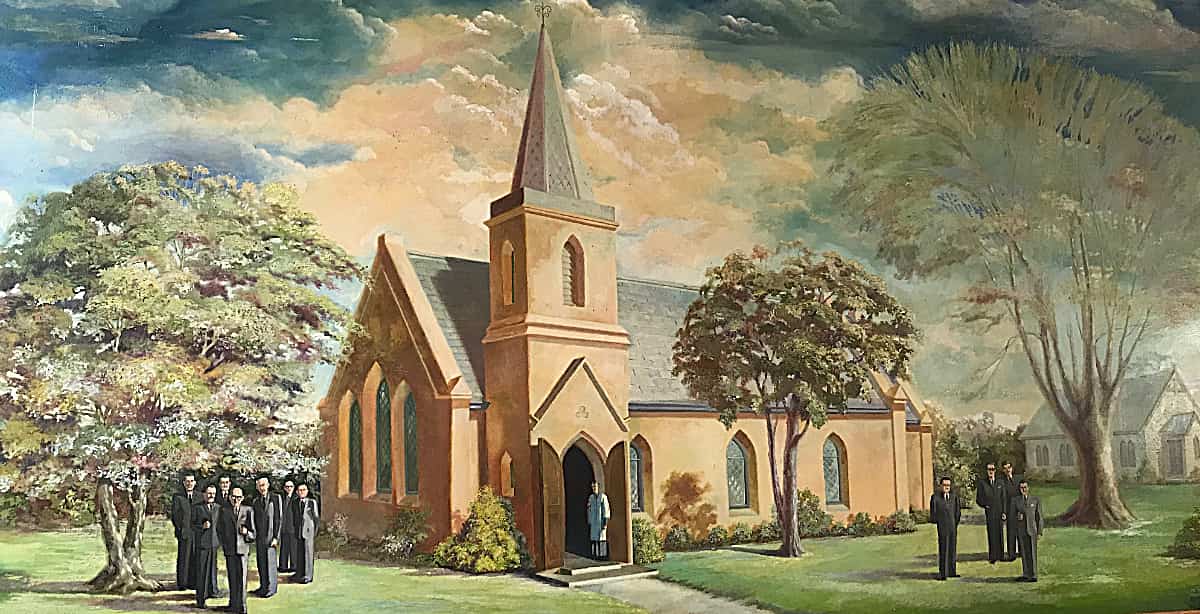
St John’s Anglican Church, Bentleigh – the first church, from a painting
[photograph by John Maidment (April 2021)]
The first church building on this site was opened on 11 May 1873. This was a small brick building in the Gothic style with a short four-bay nave, chancel and tower capped by a spire. Owing to structural deterioration this was replaced by the present modernist church designed by the partnership of Gawler, Churcher & Boardman with David Gawler largely responsible for the design.1 The builders were R. & M. Brewin. The building was dedicated by Archbishop Frank Woods on 24 March 19622 and consecrated on 6 May 1982 by Archbishop R.W. Dann.3
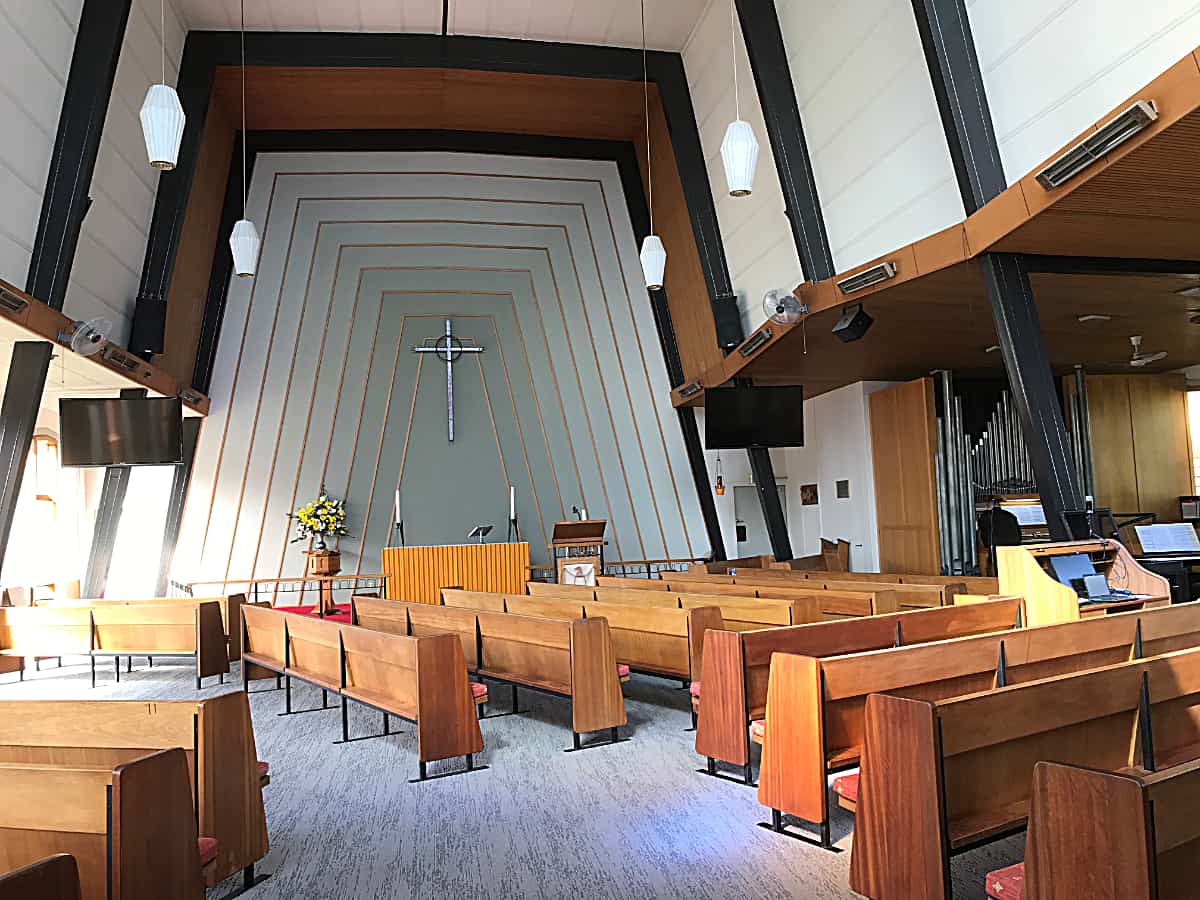
St John’s Anglican Church, Bentleigh – interior with organ to the right
[photograph by John Maidment (April 2021)]
The church contains a number of distinctive fittings, such as the screen separating the side chapel from the building, the communion rails, the altar candlesticks and the immersion font at the rear. A number of objects from the former church have been retained, such as the three stained glass lancet windows above the west end. A large oil painting depicts the earlier church.
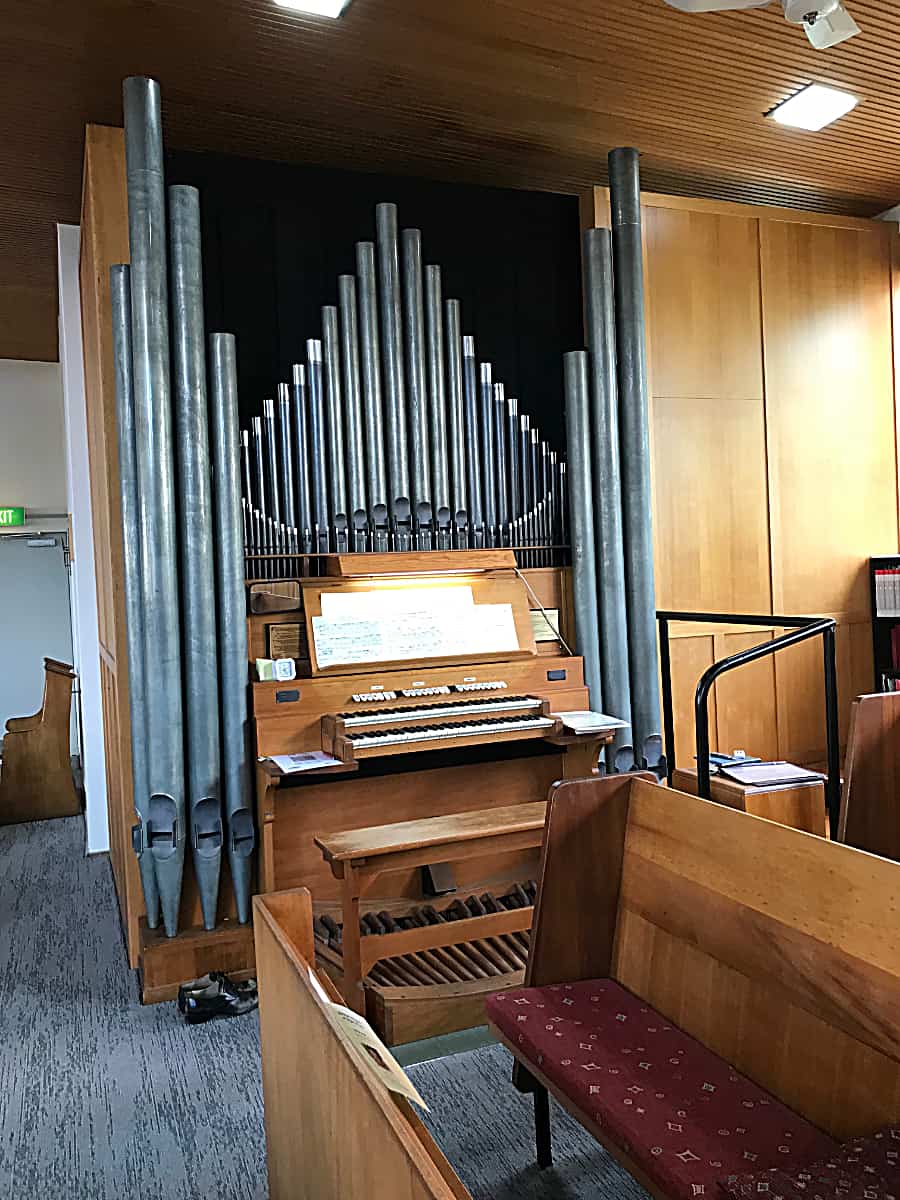
St John’s Anglican Church, Bentleigh – organ
[photograph by John Maidment (November 2021)]
The organ was built in 1961 by Hill, Norman & Beard (Australia) Pty Ltd for St Luke’s Anglican Church, North Brighton.4 It is a very rare example of an extension instrument built during the regime of W.A.F. Brodie, managing-director of the firm with pipework on open display and a Germanic flavor to the stop nomenclature. It incorporates some pipework from the former organ at St Luke’s, a 19th century mechanical action instrument of unknown provenance:
MANUAL
Open Diapason
Stopped Diapason Bass
Claribel
Gamba
Dulciana
Wald Flute
Pedal coupler
PEDAL
Bourdon
|
8
8
8
8
8
4
16
|
TC
CC-BB
TC
TC
TC
|
|
Compass: 56/30
All manual stops enclosed5
At least two ranks from this instrument, both of black metal (Open Diapason and Gamba) may have been recycled.
The organ stood to the right of the chancel of St Luke’s Church, an early example of the work of Louis R. Williams, and now subdivided into residential accommodation.
In 1991, the organ was moved to St John’s Church, Bentleigh by Geo. Fincham & Sons Pty Ltd. More recent work in 2019 by Australian Pipe Organs Pty Ltd has seen replacement of the electro-magnetic chest action, installation of couplers, and some small changes to the specification.
MANUAL I
Principal
Gedeckt
Salicional
Octave
Nasat
Super Octave
Trumpet
Manual II to Manual 1
|
8
8
8
4
2-2/3
2
8
|
A
B
C
A
B
A
D
|
unenclosed
enclosed
enclosed
enclosed
|
MANUAL II
Gedeckt
Salicional
Principal
Klein Gedeckt
Geigen
Flageolet
Mixture
Trumpet
|
8
8
4
4
4
2
III
8
|
B
C
A
B
C
B
C
D
|
(originally Terz 1-3/5)
(originally Sifflote 1)
|
PEDAL
Gross Gedeckt
Octave
Gedeckt
Super Octave
Trumpet
Manual I to Pedal
Manual II to Pedal
|
16
8
8
4
8
|
B
A
B
A
D
|
|
Tremulant
Compass: 61/30
Electro-magnetic action
Balanced swell pedal to ranks B, C and D
Attached stopkey console6
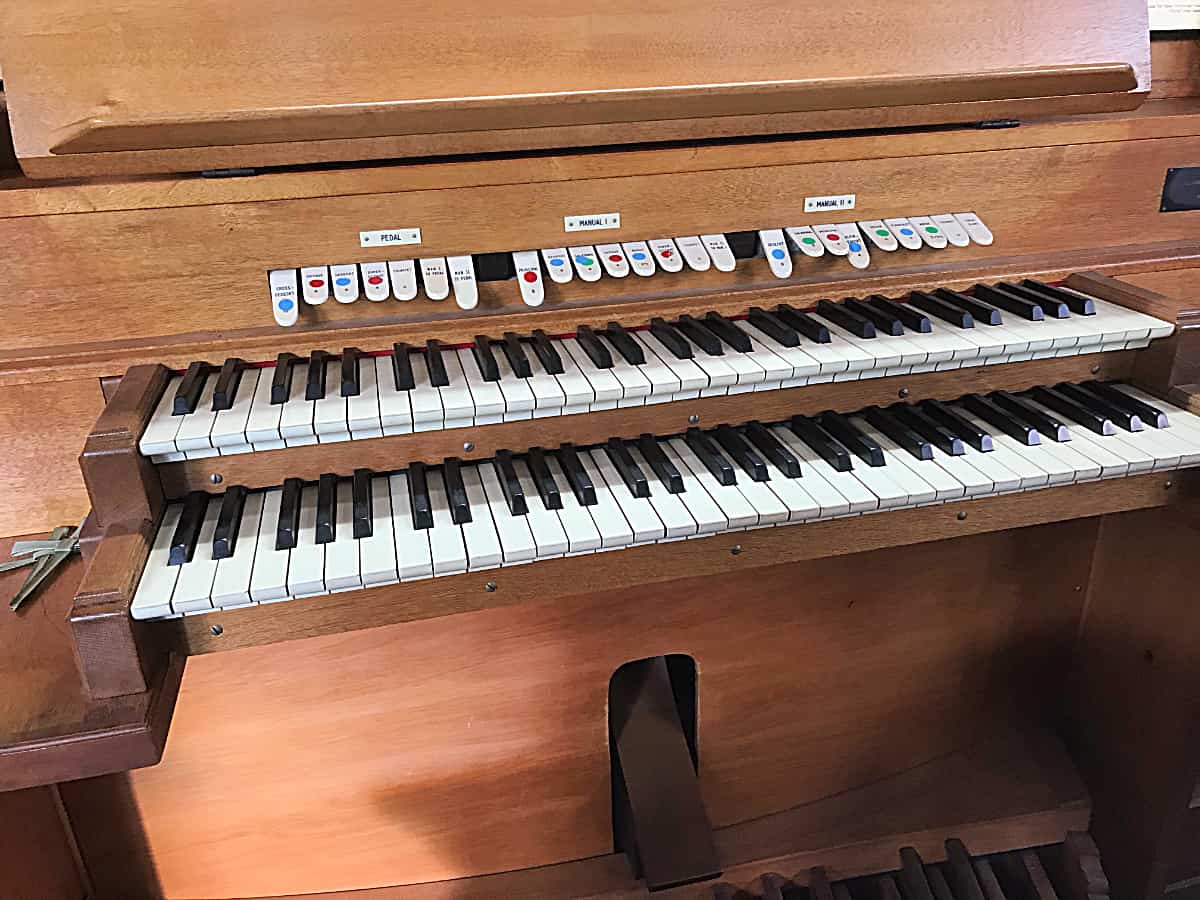
St John’s Anglican Church, Bentleigh – console
[photograph by John Maidment (April 2021)]
1 Historical information from https://www.gleneira.vic.gov.au/media/7572/624-centre-road-bentleigh-citation-c214glen.pdf, accessed 8 November 2021
2 Details noted from plaque in church
3 Details noted from plaque in church
4 Visited at St Luke’s Church by John Maidment 1966
5 Specification supplied by Albert Reis (Hill, Norman & Beard) to John Maidment 1966
6 Specification noted by John Maidment April 2021 and further details from recital programmes 2021




